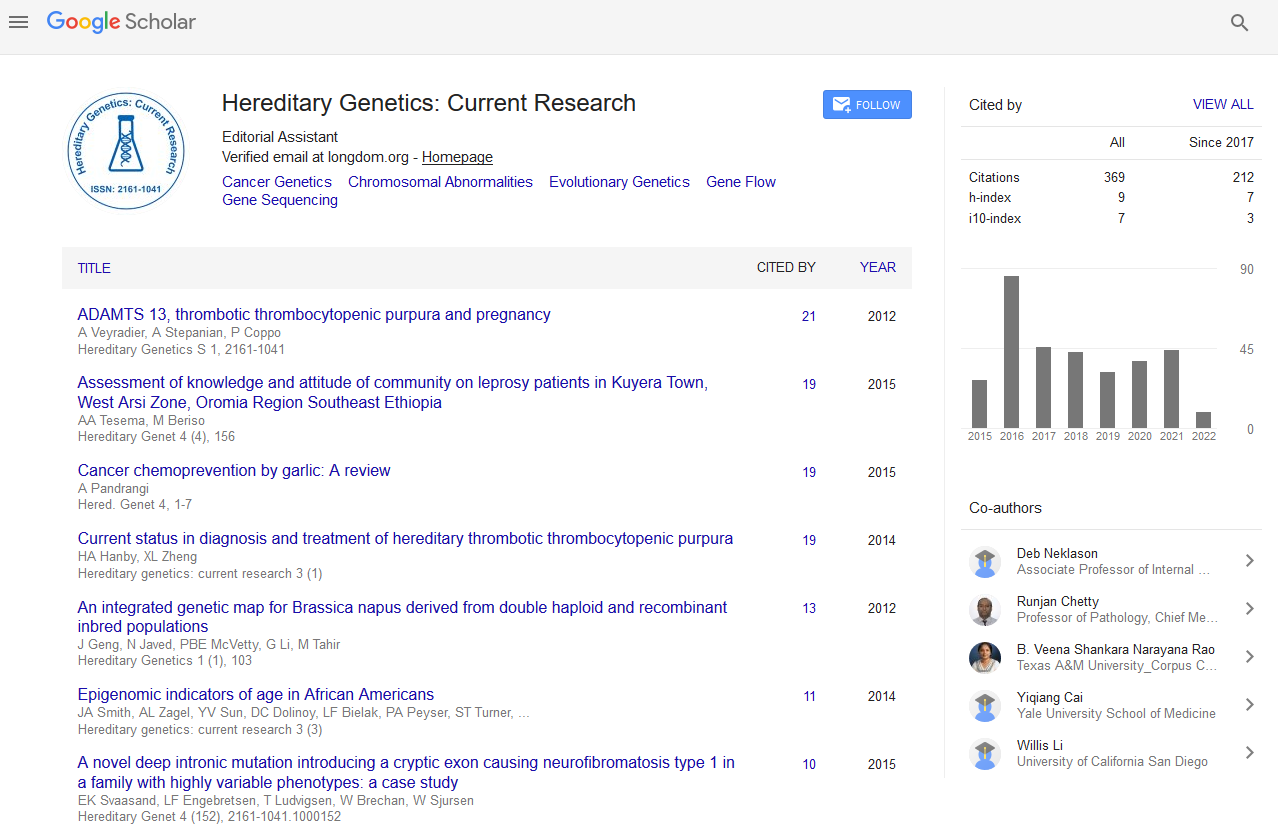PMC/PubMed Indexed Articles
Indexed In
- Open J Gate
- Genamics JournalSeek
- CiteFactor
- RefSeek
- Hamdard University
- EBSCO A-Z
- NSD - Norwegian Centre for Research Data
- OCLC- WorldCat
- Publons
- Geneva Foundation for Medical Education and Research
- Euro Pub
- Google Scholar
Useful Links
Share This Page
Journal Flyer

Open Access Journals
- Agri and Aquaculture
- Biochemistry
- Bioinformatics & Systems Biology
- Business & Management
- Chemistry
- Clinical Sciences
- Engineering
- Food & Nutrition
- General Science
- Genetics & Molecular Biology
- Immunology & Microbiology
- Medical Sciences
- Neuroscience & Psychology
- Nursing & Health Care
- Pharmaceutical Sciences
Abstract
Epidemiology of Hereditary Haemorrhagic Telangiectasia (HHT) in Spain
Roberto Zarrabeitia Puente, Jesús Bueno, Matilde Salcedo, Jose María Cuesta, Sarah Marqués, Cristina Menéndez, Ana Bustamante, Jose Luis Fernández-Forcelledo, Jose Luis Martín Gurpegui, Angel De La Mora, Sara Rodriguez Prado, Luisa María Botella, Carmen Fariñas-Álvarez and Jose Antonio Parra
Aim: To describe epidemiological characteristics of a wide cohort of Spanish patients with hereditary hemorrhagic telangiectasia (HHT)/ Rendu-Osler-Weber disease.
Methods and Results: Between 1 January 2002 and 31 December 2013, 667 Spanish patients with suspected HHT were evaluated in the reference HHT Unit in Hospital Sierrallana and 449 were diagnosed by clinical Curaçao criteria and/or genetic test. The diagnostic sensitivity of Curaçao clinical criteria in the population studied was 94.59%. Prevalence was 1:5,936 people and lethality rate of 0.16%. Type 2 HHT was the most prevalent and in total 147 different mutations was identified. Epistaxis was the most prevalent symptom (96.88% of cases) while 95.18% of patients showed typical telangiectasias. Pulmonary involvement was present in 28.25% of patients (by computed tomography) mainly in women and HHT1 cases while liver infection was more prevalent in HHT2 cases. Brain involvement was disclosed in 28.35% of cases. Telangiectasias in conjuctival mucose were very frequent mainly in HHT1 elderly patients.
Conclusion: This is the first representative series of epidemiological data on a non-previously evaluated population, showing results about prevalence, genetic distribution and organ infection and disclosing new observations that can help guide the diagnostic and screening procedures for these patients.


